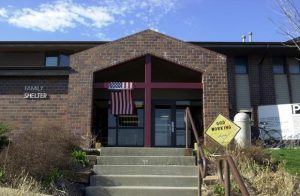Diversity
“For just as the body is one and has many members, and all the members of the body, though many, are one body, so it is with Christ… God arranged the members of the body, each one of them, as he chose. If all were a single member, where would the body be? As it is, there are many parts, yet one body.” 1 Corinthians 12:12,18-20
Student diversity goes deeper than a child’s skin color; it includes home life, socioeconomic status, and even learning styles. When I first started in the Education program, I was ignorant to what diversity fully included, as I had spent the last 18 years in a town of 2500; however, through several of my Education-specific classes, mainly Psychology of Exceptional Learners, Differentiated Instruction, and Diverse Classrooms and Human Relations, I have become more aware of not only what diversity looks like but how to effectively teach diverse students.
1. Students deserve fair, not equal.
The only time fair should mean equal is in regards to discipline; therefore, in every other situation, equality is not being fair. Students all have different needs – each of which should be met with what is best for that particular student and not what is best for someone else. In my Psychology of Exceptional Learners field experience at Seward Elementary School, I witnessed this firsthand. The young girl I directly worked with had different needs than the rest of her classmates. It would not have been fair to her if she were given the exact same support as anyone else in the class because they do not display the same needs.
2. Funds of knowledge is fundamental
In short, funds of knowledge refers to acknowledging that what you see in the classroom isn’t a student’s full story. This understanding incorporates students’ cultures into the classroom, showing them that you as the teacher are willing to take the extra step to learn about and appreciate their way of life. So much more takes place in a child’s life outside of school, and ignoring that is not fair to them or their education. I was able to see the benefit of the funds of knowledge on a servant event with my senior high youth group to Philadelphia in 2012. We spent the bulk of the trip working with Philadelphia’s homeless community, and in that short week, the 40 of us were able to hear their stories, build relationships with them, and directly learn why to take that “extra step.”

People’s City Mission – Lincoln, NE
3. Give them choices
Student choice is a powerful tool that should be utilized in every classroom, and I plan to bring it into my classroom when possible. By providing options via choice boards, Genius Hour, and even summative assessments, students will take initiative and show ownership of their own learning based on their individual needs. In my time at People’s City Mission, I saw how giving the children choices in activities increased their desire to learn and kept them interested because they were able to do what they wanted to do.
